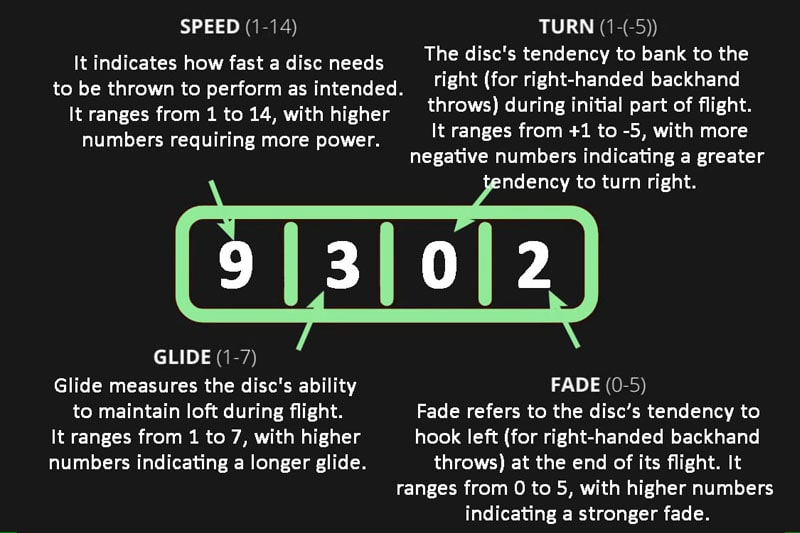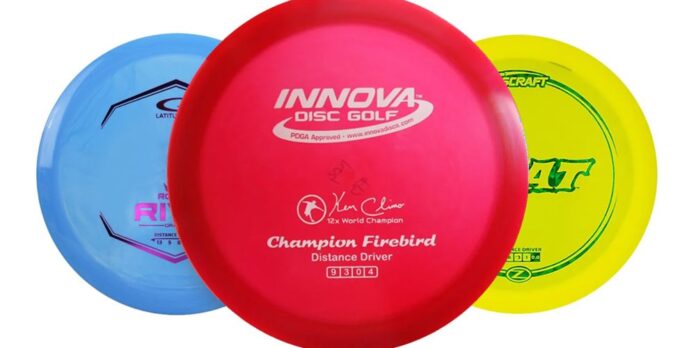Disc golf is a rapidly growing sport that combines the precision of golf with the fun of frisbee. Played in parks and courses around the world. This activity offers a unique blend of physical and mental challenges. In disc golf, understanding disc golf numbers is like choosing the right gear in traditional golf. These numbers give players insights into each disc’s traits and performance. They include its flight path, distance, and behavior in different wind conditions.
Whether you are new to disc golf or a seasoned player, you must understand disc golf numbers. They’re key to building your first set of discs or fine-tuning your strategy. This article will explore the meaning of these numbers. It will discuss how they affect gameplay. It will also show how players can use them to improve their skills on the course. By mastering disc golf numbers, players can make better choices. This gives them a competitive edge. It improves their experience and performance in the sport.
What Are Disc Golf Numbers?
Disc golf numbers are a rating system. It shows the flight traits of a disc. These numbers, usually on the disc, have four parts: speed, glide, turn, and fade. Each number represents an aspect of the disc’s performance. It helps players know how the disc will behave when thrown.

Disc golf numbers help players evaluate and compare different discs. They provide a consistent method to do so. Players can select discs that match their skill level and playing style by evaluating these ratings. This system helps players make better choices. They can choose a disc that flies straight and long or one that curves sharply at the end of its flight. Disc golf numbers are key for building a good disc collection and improving strategy.
The Four Primary Disc Golf Numbers
Disc golf numbers consist of four parts. They describe a disc’s flight: speed, glide, turn, and fade. Each of these numbers plays a crucial role in how the disc performs and how it should be used on the course.
Speed
- Speed is the first number in the series and indicates how fast a disc needs to be thrown to perform as intended. It ranges from 1 to 14, with higher numbers requiring more power.
- High-speed discs can potentially fly farther but are harder to control for beginners. Lower-speed discs are easier to manage and are better suited for shorter, more precise shots.
Glide
- Glide measures the disc’s ability to maintain loft during flight. It ranges from 1 to 7, with higher numbers indicating a longer glide.
- Discs with high glide ratings can cover more distance, making them ideal for long throws. However, in windy conditions, high-glide discs can be more challenging to control.
Turn
- Turn describes the disc’s tendency to bank to the right (for right-handed backhand throws) during the initial part of its flight. It ranges from +1 to -5, with more negative numbers indicating a greater tendency to turn right.
- Discs with high turn ratings are useful for making anhyzer shots or for players with less powerful throws. Conversely, discs with a low turn rating are more stable and better suited for straight flights.
Fade
- Fade refers to the disc’s tendency to hook left (for right-handed backhand throws) at the end of its flight. It ranges from 0 to 5, with higher numbers indicating a stronger fade.
- Discs with high fade ratings are ideal for finishing left or for making hyzer shots. Discs with low fade ratings provide a straighter finish, which is beneficial for precise landings.
Players must know these four key disc golf numbers. They are vital for selecting discs and improving performance on the course. By mastering how each number affects a disc’s flight, players can make strategic choices. These should align with their throwing style and each hole’s demands.
How to Interpret Disc Golf Numbers
To understand disc golf numbers, you must know how the four main ratings—speed, glide, turn, and fade—interact. They affect a disc’s overall performance. By examining these numbers, players can decide which discs to use in different situations.
- Balancing Speed and Glide: High-speed discs often pair well with high glide ratings to maximize distance. However, beginners might prefer slower discs with moderate glide for better control.
- Turn and Fade Interplay: Turn and fade are critical for shaping shots. A disc with a high turn and low fade is best for right-turning shots (anhyzer). A disc with a low turn and high fade is for left-turning shots (hyzer).
- Choosing the Right Disc: Players should consider their skill level, power, and the course’s demands when choosing discs. For example, a player with less power may benefit from discs with higher glide and turn ratings. They can achieve maximum distance with them. Advanced players might focus on speed and fade to improve shot-shaping.
Examples:
- A disc with ratings of 9/5/-2/1. This disc needs moderate speed. It has good glide. It will turn right at first, then fade left slightly. Such a disc is versatile for a variety of shots.
- A disc with ratings of 13/6/0/3. It is a high-speed driver with a big fade. So, it is ideal for long hyzer shots that finish left.
Conclusion
Disc golf numbers provide a way to compare disc flights. They describe a disc’s flight traits. It helps players make informed choices about their equipment. By mastering the right mix of speed, glide, turn, and fade, players can choose discs that fit their skill and style. Whether you’re a beginner or an expert, disc golf numbers matter. They are key to improving your game and enjoyment. Disc golf has endless opportunities for learning and growth. By experimenting with different discs, players can refine their skills and strategies. Embrace the challenge. Explore the possibilities. Let disc golf numbers guide you to success on the course.







